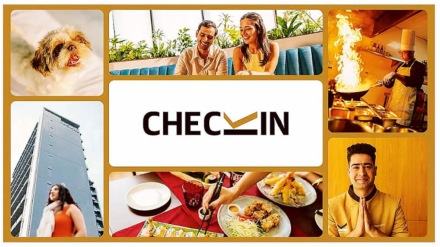For years Oyo has been shorthand for budget travel. Now its parent Prism is making a bigger wager: to convince travellers to trust it with premium stays, a segment that commands higher prices, fatter margins and could redefine the company’s image ahead of a long-awaited IPO.
The economics are hard to ignore. “The premium segment commands 56% of total room revenue despite representing only 34% of supply,” says Dimple Shastri, operations partner at Stratefix Consulting. “Luxury properties achieve ADRs (average daily rates) of 15,655–16,797 compared to budget hotels at 3,581, a five-fold differential that’s actually widening. Oyo clearly recognises these superior unit economics.” She adds that premium properties make up only 17% of India’s branded hotel stock (about 29,000 keys out of 170,000) suggesting plenty of headroom for growth.
Taking advantage of this gap, Prism has carved out its higher-end portfolio into a separate vertical, CheckIn. Ritesh Agarwal, founder and group chief executive officer of Prism, framed it as a natural evolution at the time of its launch. “It delivers two key benefits: the assurance that every property meets rigorous standards of quality and service and the convenience of accessing diverse premium options without the need to navigate multiple channels,” he said. “Just as Oyo became synonymous with budget travel globally, CheckIn will serve as our global house of brands for premium hotels and homes.”
The app, piloted more than three months ago on the Play Store and App Store in India, already lists properties in destinations such as London, Dubai, Bali besides several Indian cities. A global rollout is planned in the coming months.
Oyo insists a standalone brand was necessary. “The premium category needs a dedicated approach to curate elevated amenities, bespoke check-in experiences and partnerships with distinctive properties,” a company spokesperson told Financial Express. The company found that travellers valued thoughtful design, personalised service and locally inspired experiences, elements that tend to get diluted when bundled alongside budget options. “By creating CheckIn as a separate brand, we ensure focused investment in tailored technology, specialised operational teams and property standards that align precisely with premium expectations,” the spokesperson added.
Prism observed that when premium and budget options were mixed on the same platform, customers took longer to decide and sometimes missed the best fit. “By launching CheckIn, we provide clarity,” the spokesperson says. The company also noted that a growing cohort of millennials and young professionals are seeking design-led interiors, immersive local insights and exclusive perks — preferences that go beyond convenience and price.
For Shastri, the shift will recalibrate Oyo’s revenue streams. “Premium brands such as Townhouse Hotels and Sunday Hotels contribute disproportionately to profitability, though exact figures aren’t public. Based on ADR differentials and Oyo’s focus on premiumisation, I estimate premium properties already generate 30–35% of India revenue despite comprising perhaps 15-20% of inventory. Globally, that share could rise to 40-50% within three to five years.”
No cakewalk
Yet the challenge is as much about perception as it is about revenue. “Its mass-market identity is rooted in affordability and accessibility, which makes an upward stretch risky,” says Yasin Hamidani, director at Media Care Brand Solutions. “By creating CheckIn as a distinct vertical, Oyo can enter the premium category without alienating its budget audience. It’s a signal the brand wants to graduate from being just a disruptor to a portfolio player, much like mature hospitality chains.”
But Hamidani cautions that separation on paper is only the first step. Travellers may initially associate CheckIn with Oyo’s budget legacy. “The key lies in separation not just by name, but by experience,” he says, adding that consistent service, storytelling and design will be critical to shifting perception.
That experience, observers stress, is the real test. “Oyo has followed the textbook in terms of brand strategy by keeping the premium brand separate,” says Nisha Sampath, managing partner at Bright Angles Consulting. “It’s more of a challenge for a mass brand to stretch to premium than vice versa. The real challenge for Prism will not lie in differentiating the brand, but in creating the premium service experience. This is not in Oyo’s DNA, but a premium service experience has to be imagined completely differently.”
Indian travellers, she adds, are especially demanding. “Even budget brands are expected to maintain high service standards. Expectations will be sky-high from a premium brand. While players like Taj have painstakingly built their flawless reputation for warm hospitality, Oyo is only beginning to walk this road and there will be slips, trials and errors along the way.”
That said, the opportunity is undeniable. “The `60-billion wedding hotels market and emerging tier-2 premium demand create addressable segments where legacy players have limited presence,” says Shastri. For Oyo, which is reportedly preparing to file its draft red herring prospectus soon, CheckIn is as much a branding exercise as it is a growth story.
